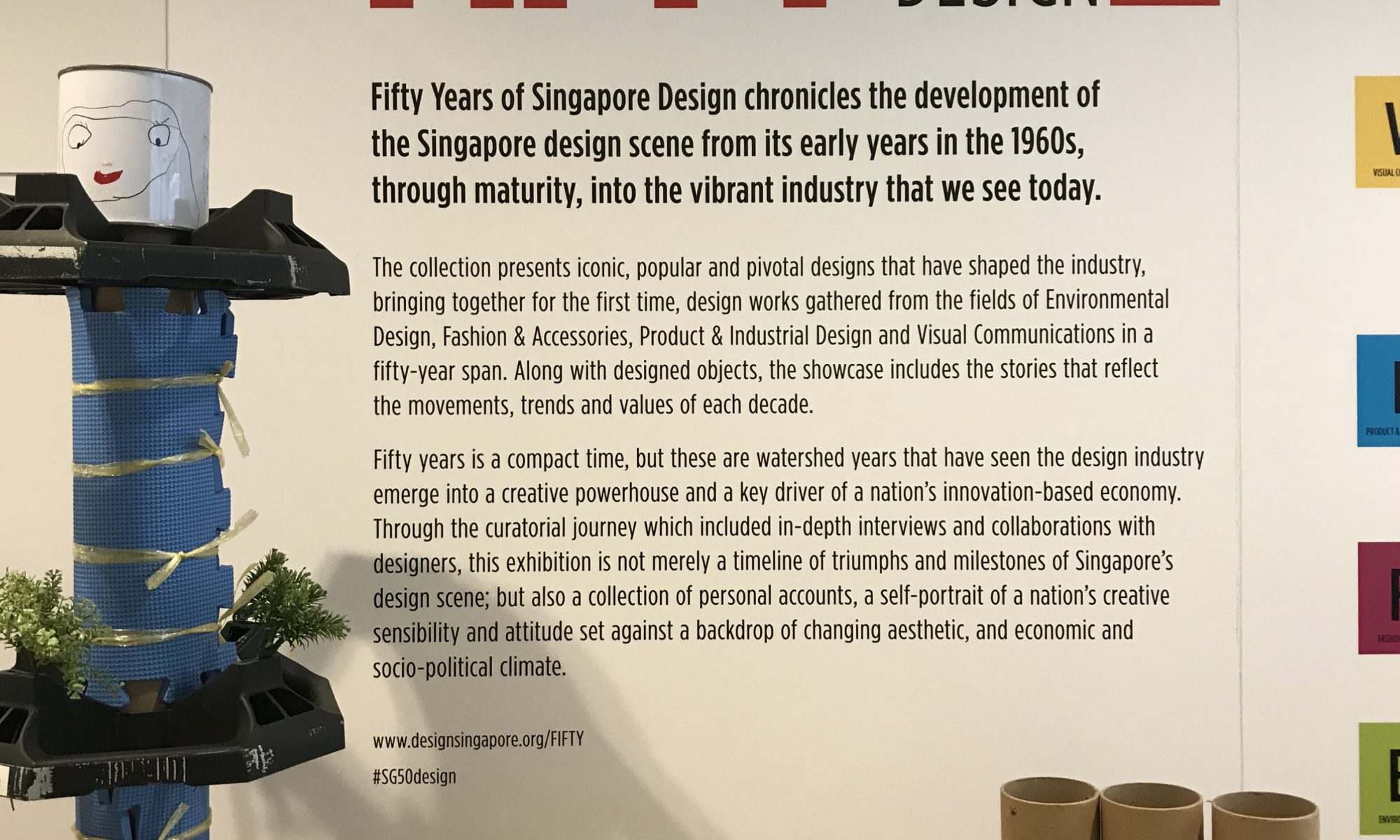Field Trip to the National Design Centre (NDC)
Take pictures and list the various types of design practices you encounter during your visit.
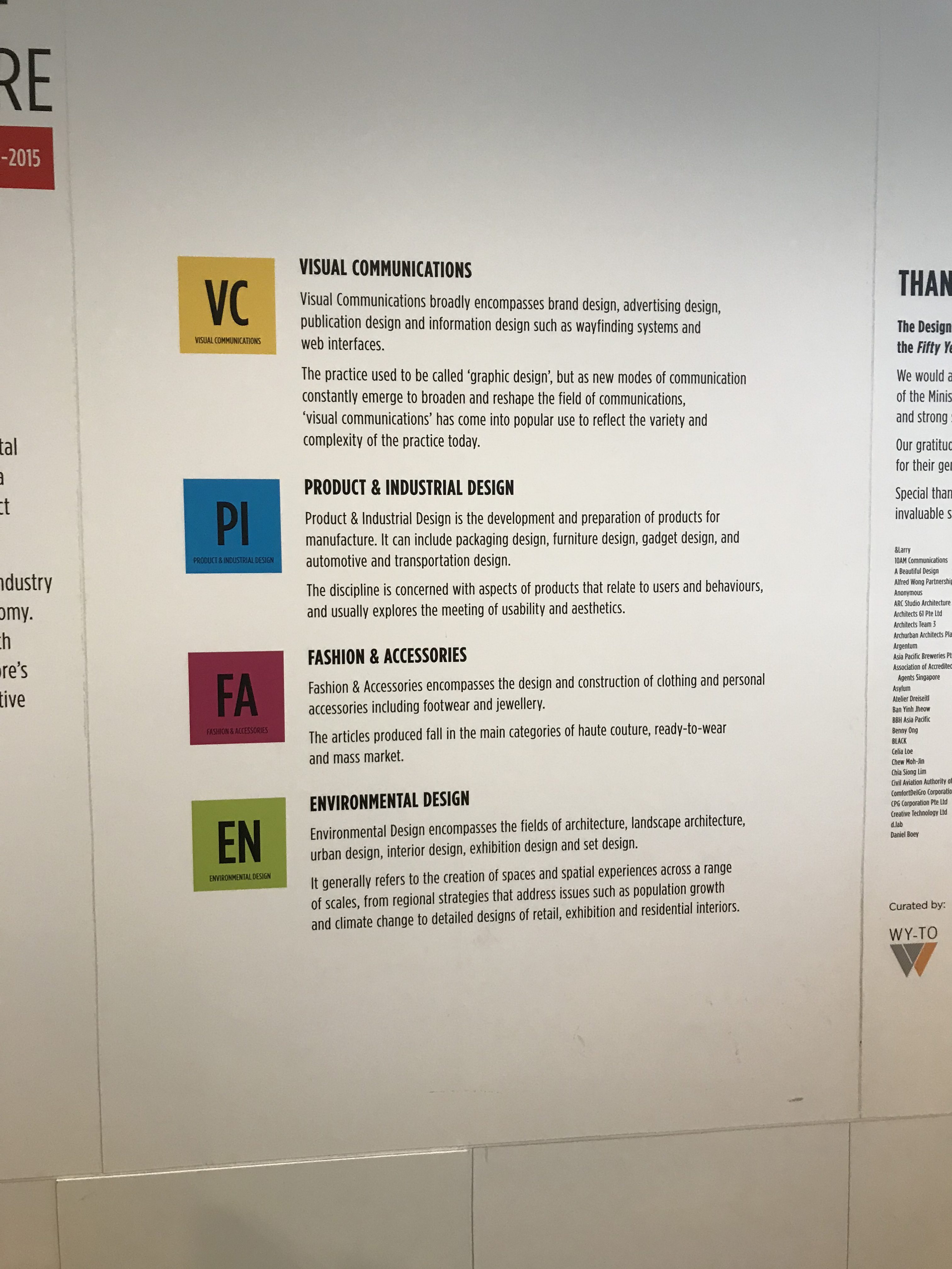
Personally, visiting the exhibition was quite intriguing; quite clueless about the evolution of design in Singapore, I was surprised to see that the design scene was actually quite diverse – in addition to graphic and packaging design, Singapore had a hand in fashion, product and architectural design, amongst others. Furthermore, you could see how each design field evolved over time and grew more prominent with each era.
What are some of your observations of the design scene/practice in Singapore over the years?
- External forces influenced the design scene greatly;
- Design style is clear with every era;
- Practicality was a major factor in design;
- Bringing forth a unique Singaporean culture was celebrated;
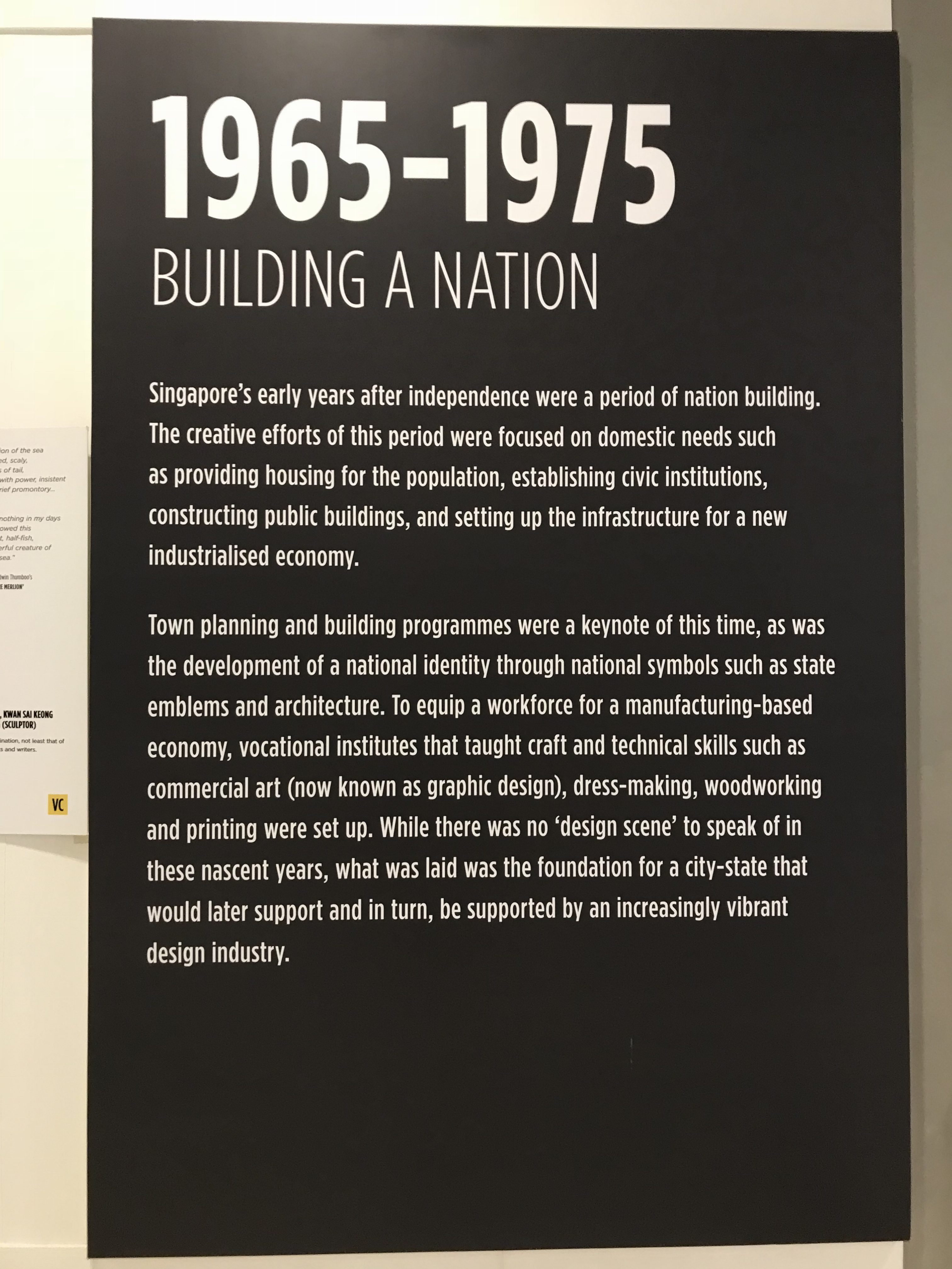
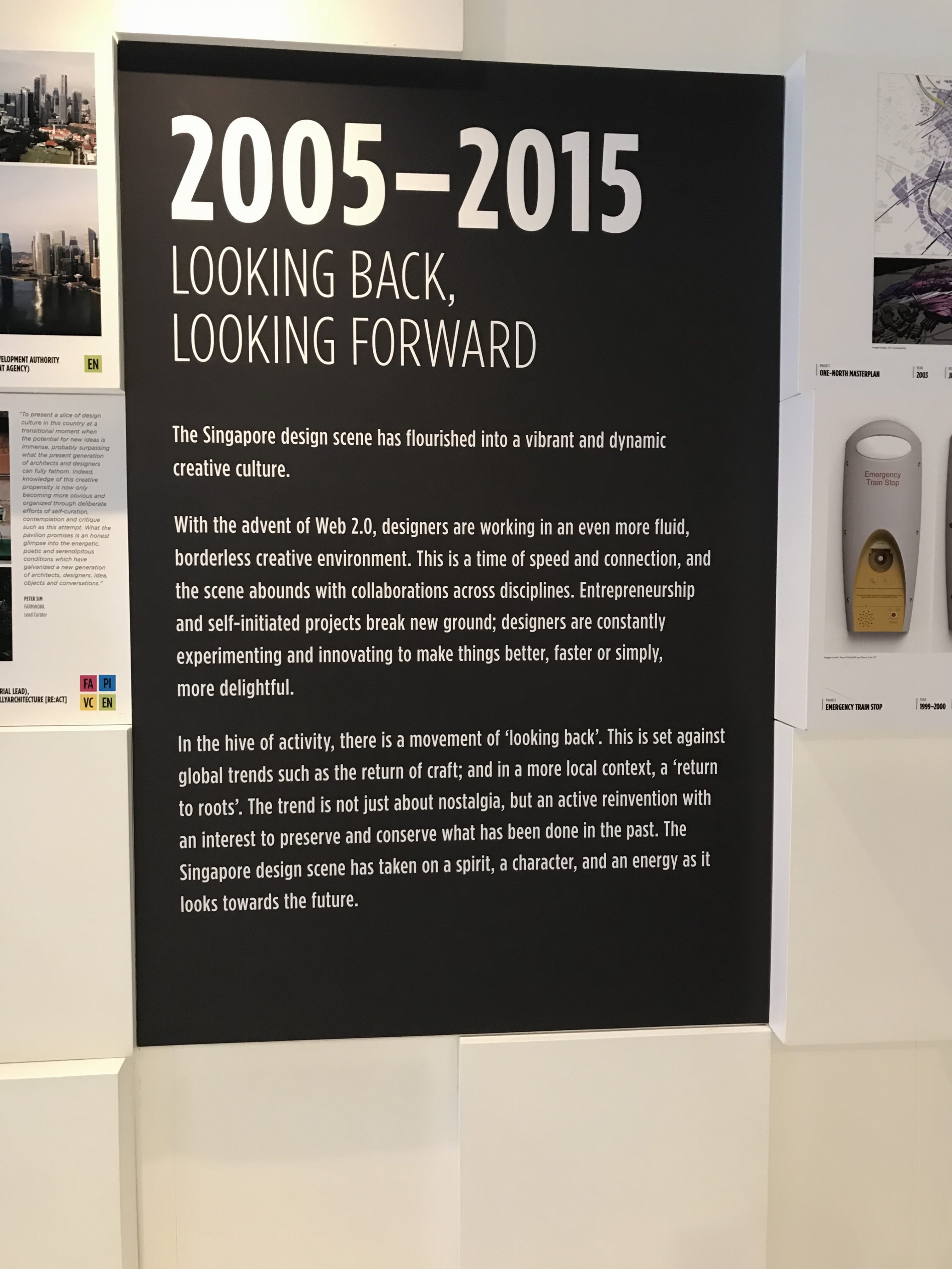
The design scene/practice in Singapore had clear evolutions throughout the decades – the influence of external factors on Singapore could have played a part in changing the design scenes with each era. The factors involved integrating new technologies, changes in the economy, branding a new nation on a global platform, and celebrating culture through nostalgia. With each decade that brought about a goal that includes external factors, designs from that particular time period could be seen changing accordingly.
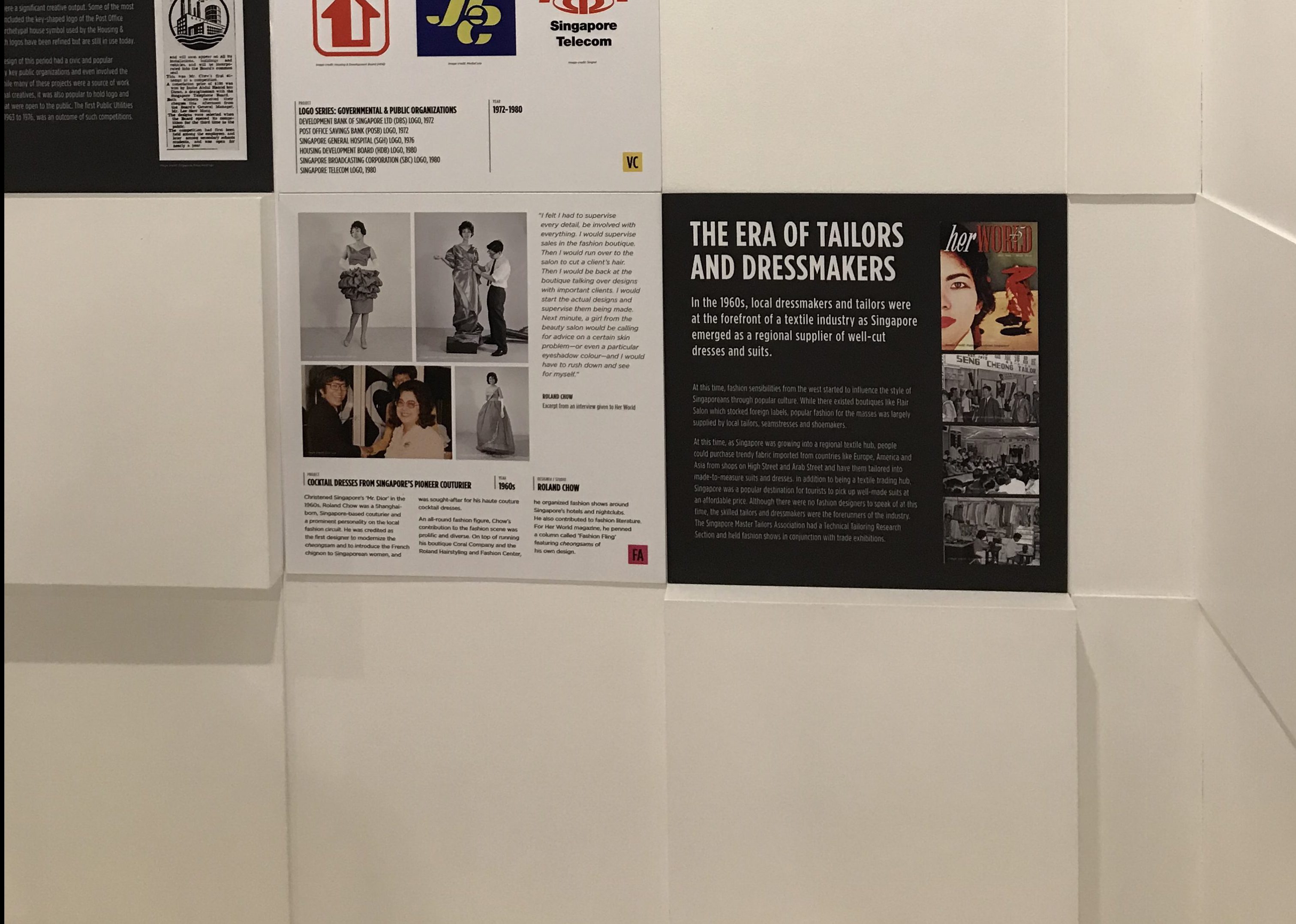
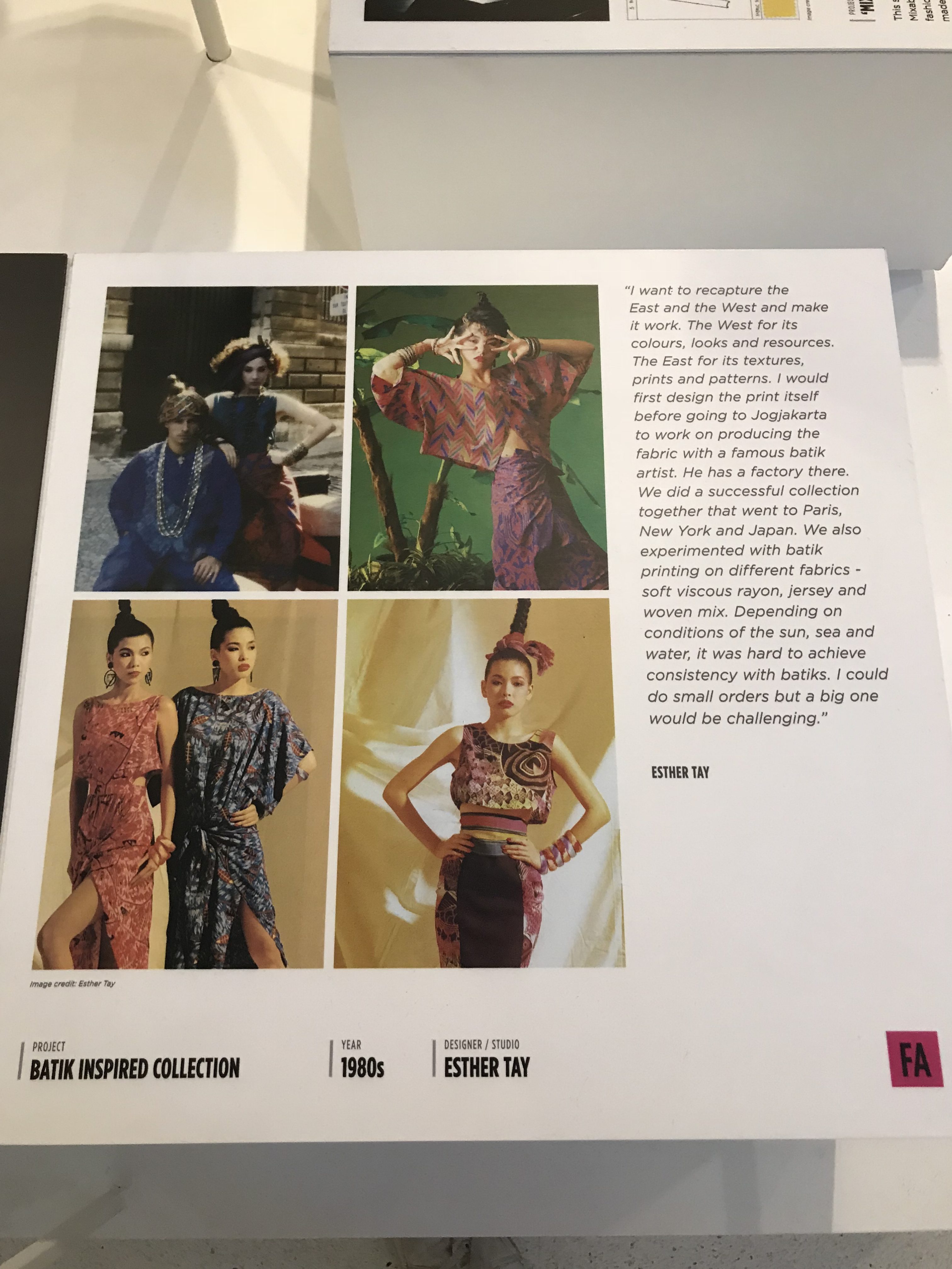
Expanding further on the influence of external factors, the design styles and trends could clearly be seen with each decade. Personally, the styles seen in the items on display probably would have followed trends relevant in that time period. A prominent example would be the pieces from the 1980s where vibrant colours and patterns were used a fair amount.
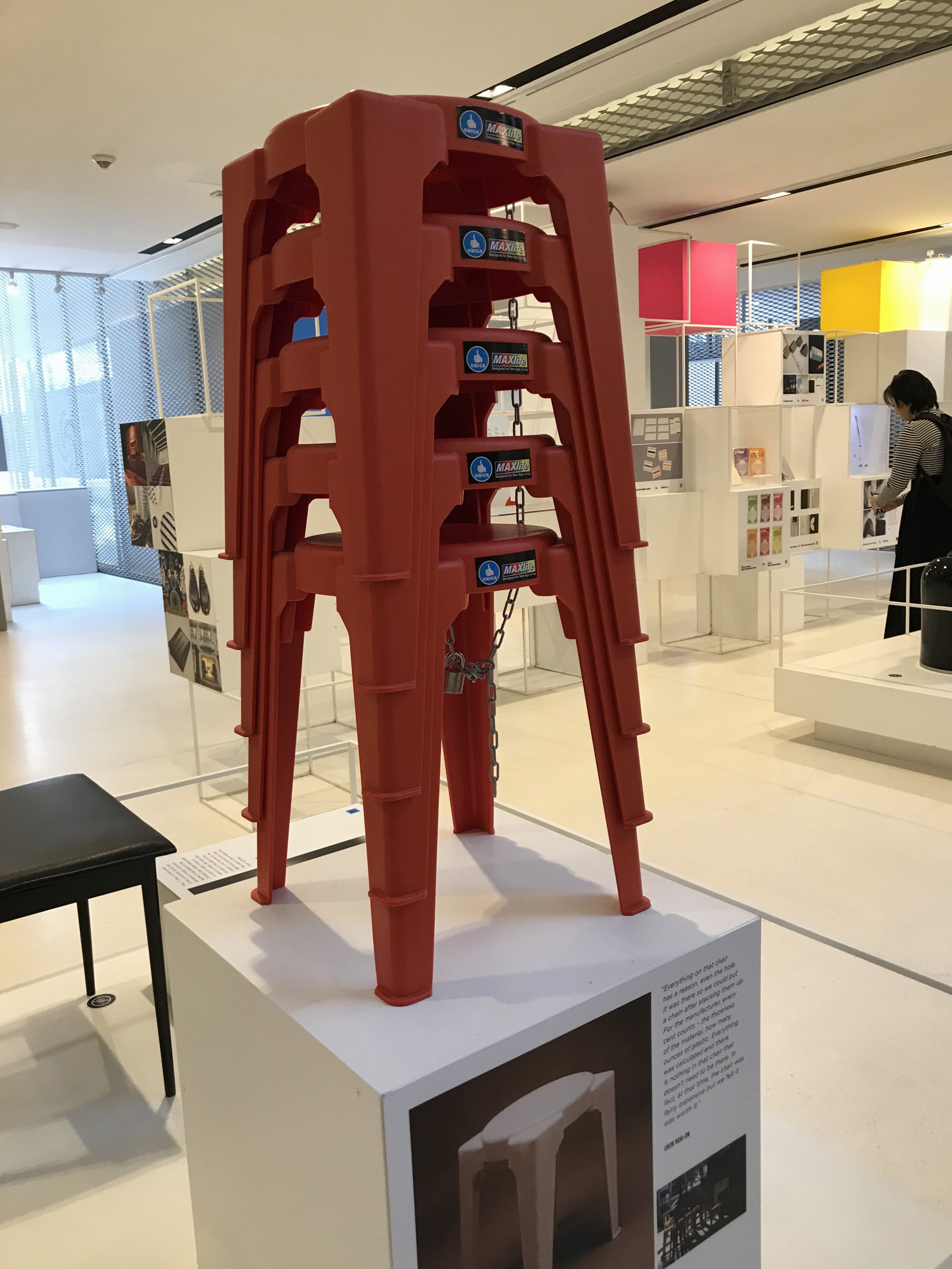
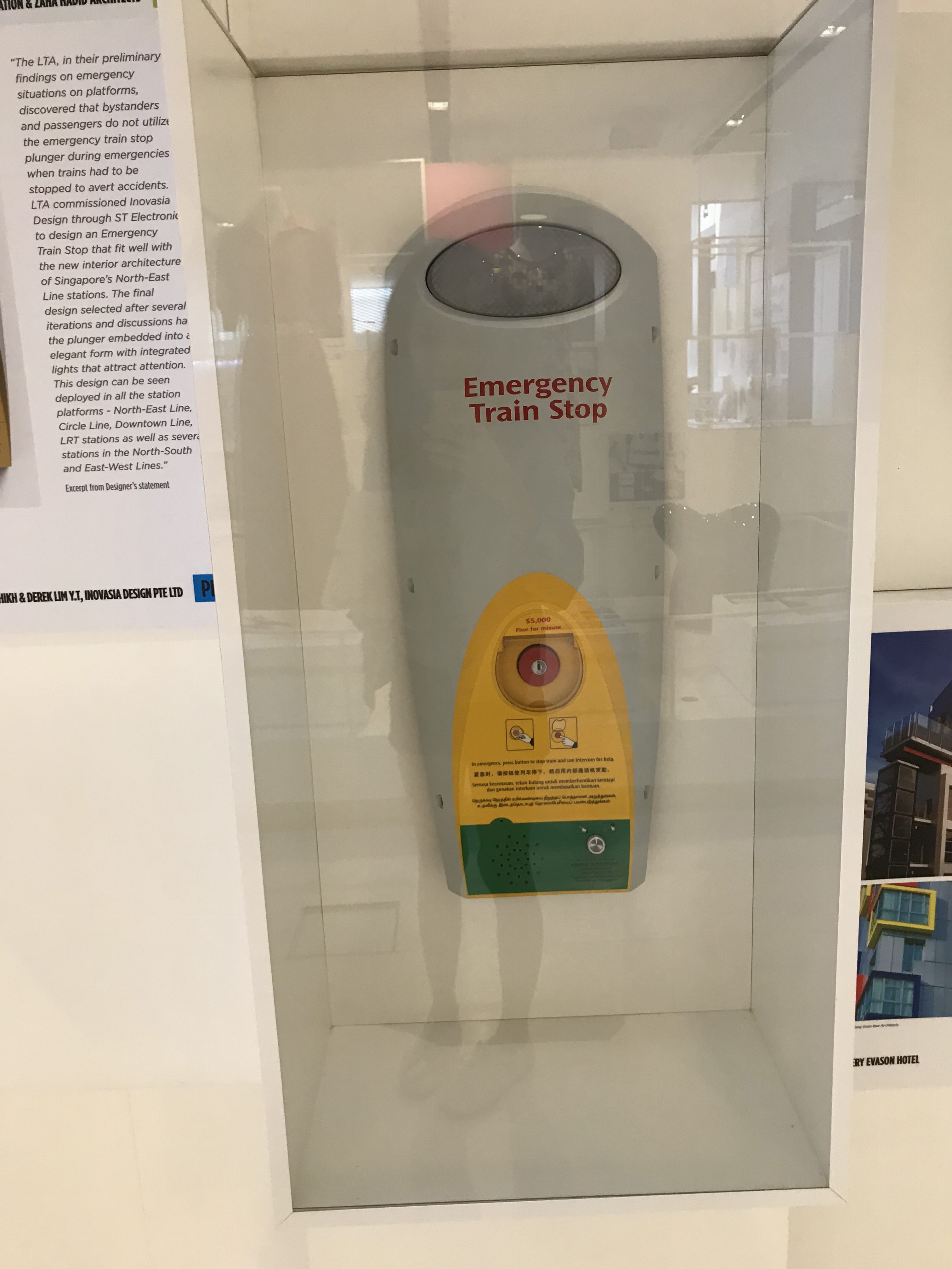
Singapore’s design scene also has a focus on practicality, the design pieces on display had other goals in addition to serving as a form of visual aid, with said goals changing with different time periods. For example, some pieces were created with the intention of integrating Singaporean culture, building a local brand, while others had the goal of creating better visitor experiences (e.g. clearer and simpler way finding signs).

Some areas of the Singaporean design scene also had a strong focus on integrating local culture. The pieces on display used different aspects of Singaporean culture (i.e. local slang, food items) to form products. This was probably in-line with the goal of branding a nation and/or celebrating nostalgia.
What are some of the future goals/key thrust for design in Singapore?
- Designing with a purpose
- Minimalist and cleaner looks
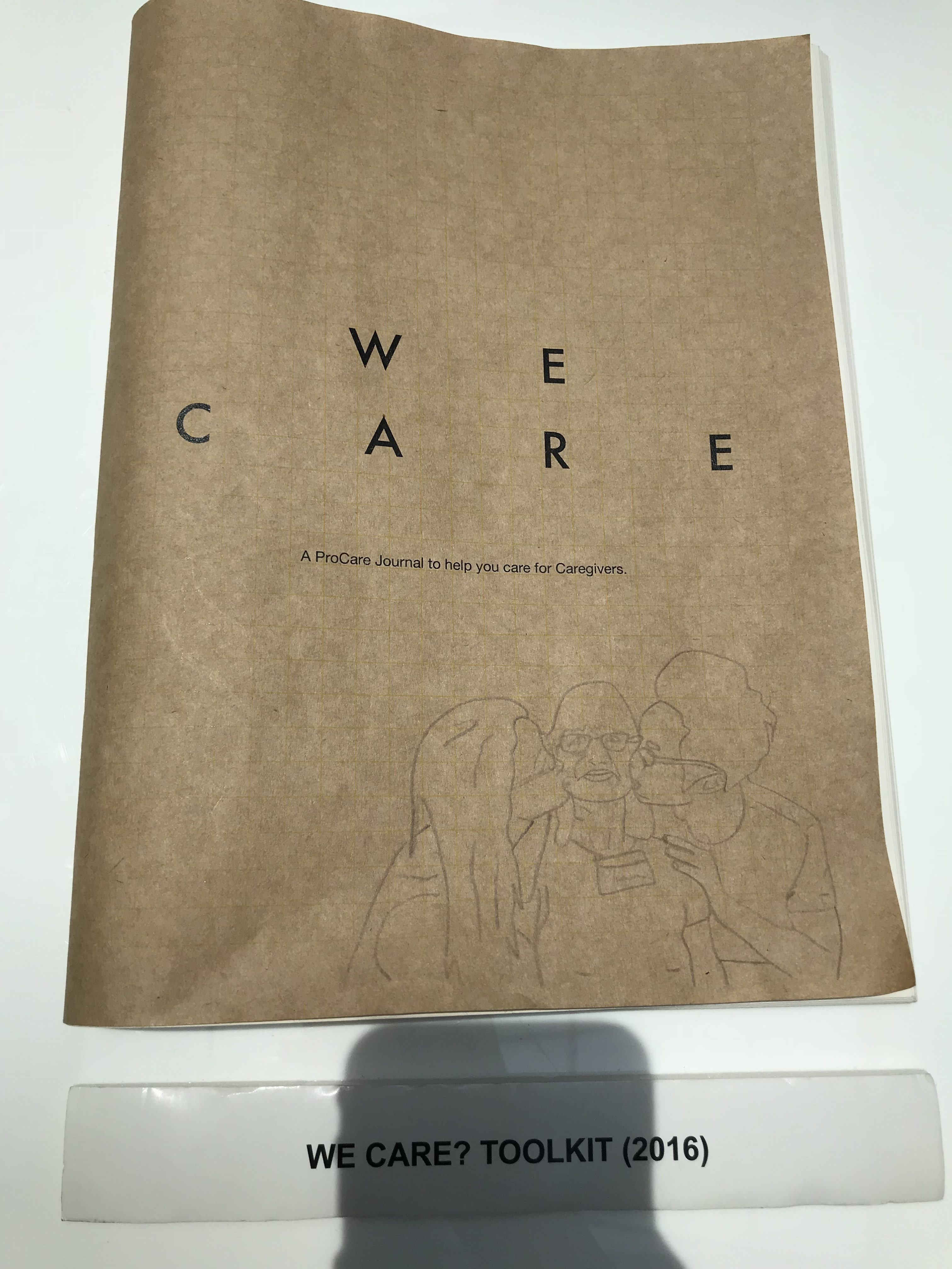
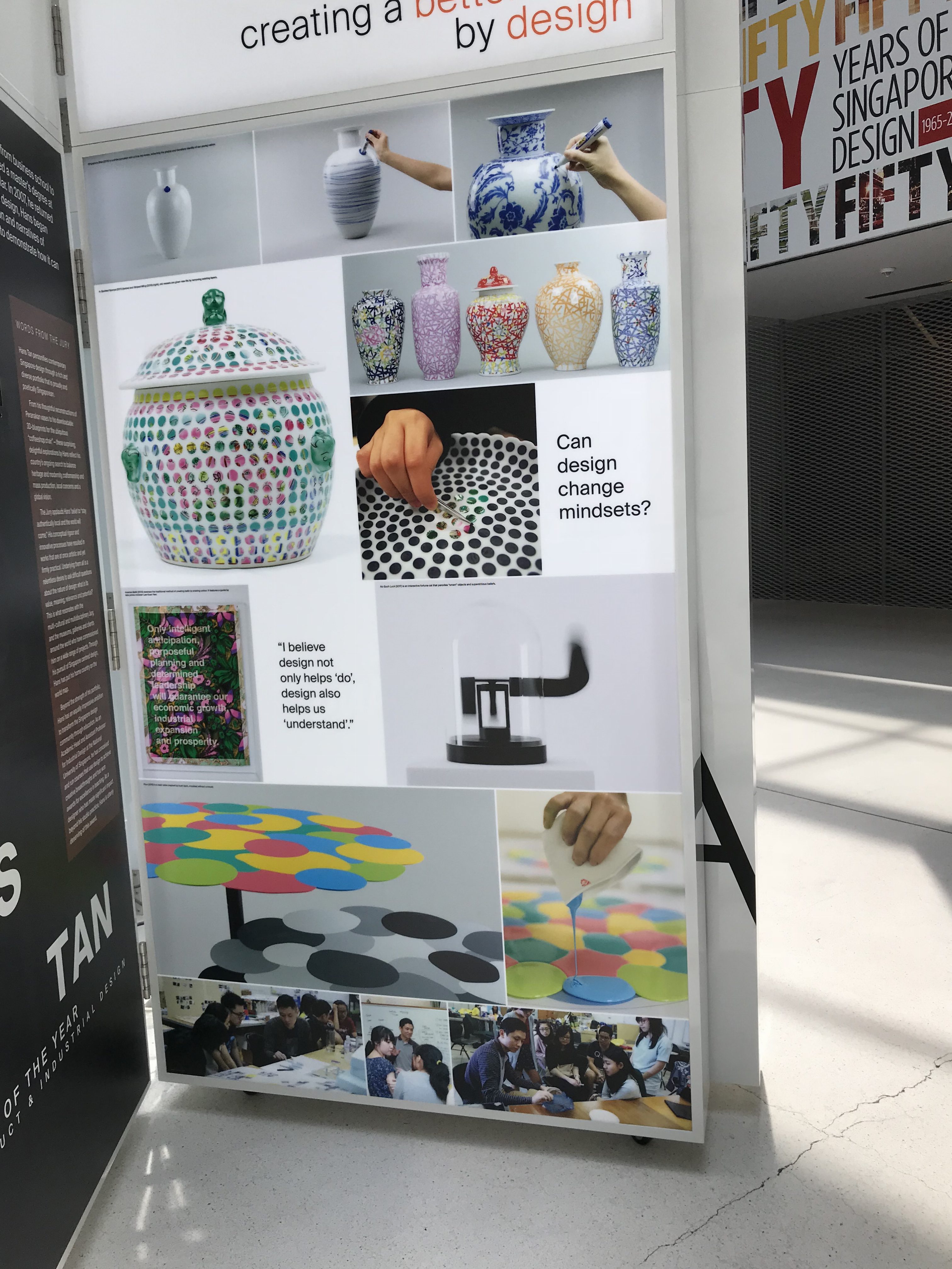
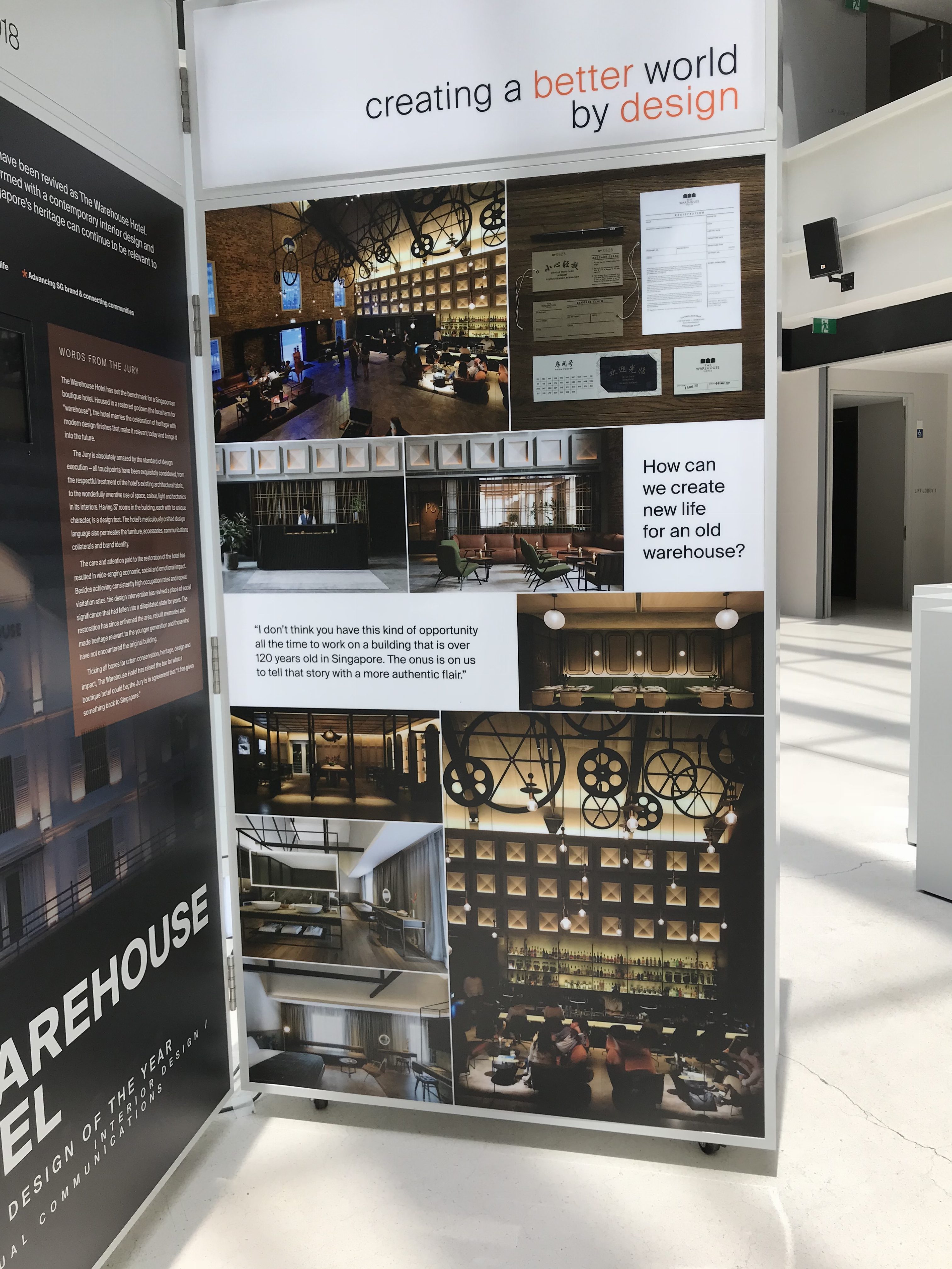
Delving further into the exhibition, it could be interpreted that the design scene in Singapore is heading towards more of designing with an additional purpose. More of the recent exhibited projects – be it architecture, product design, or graphic design – seemed to have been carried out with the intention of repurposing old objects (thereby, helping the environment), or to cater to a certain demographic (thereby, helping others).
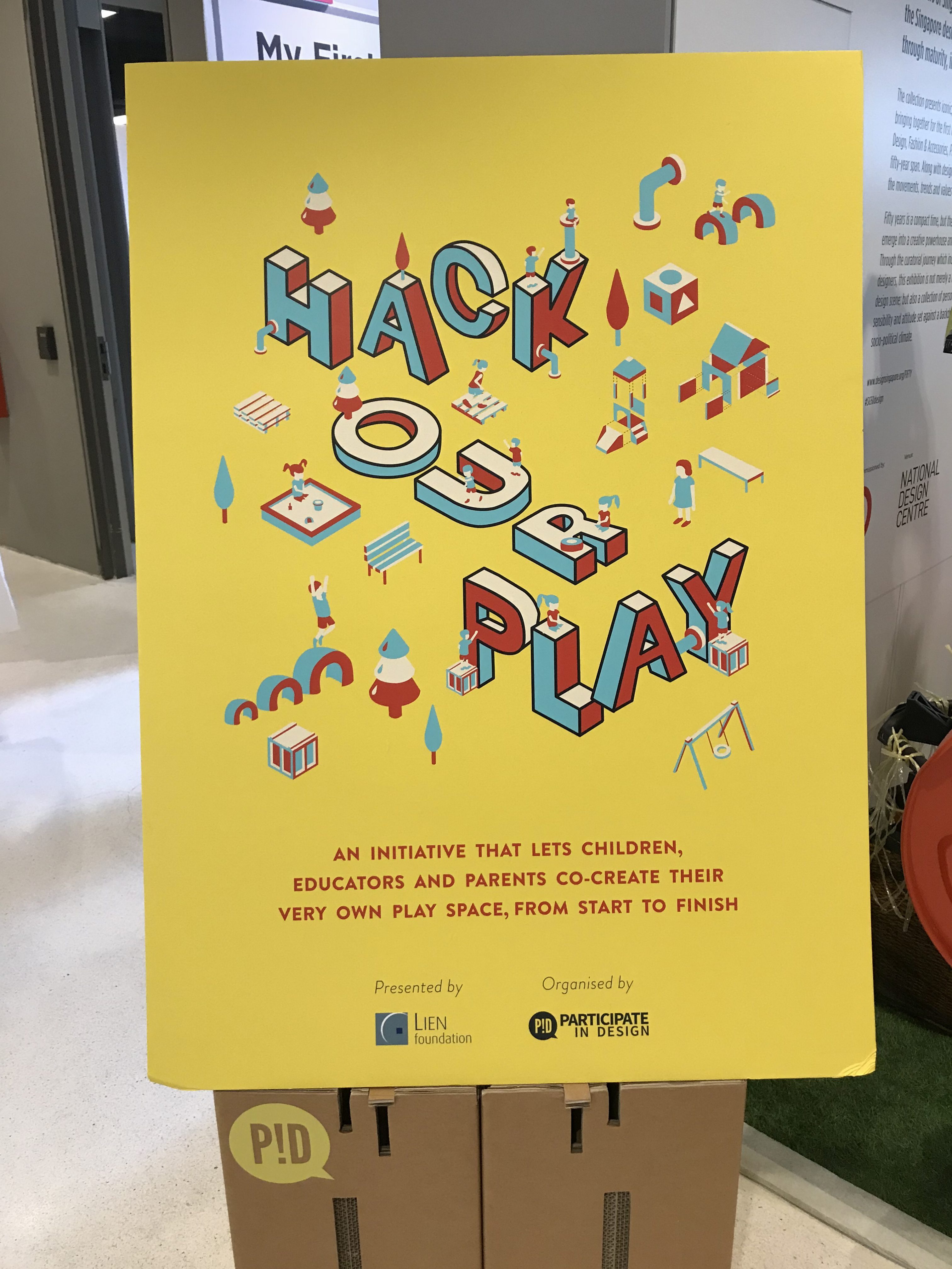
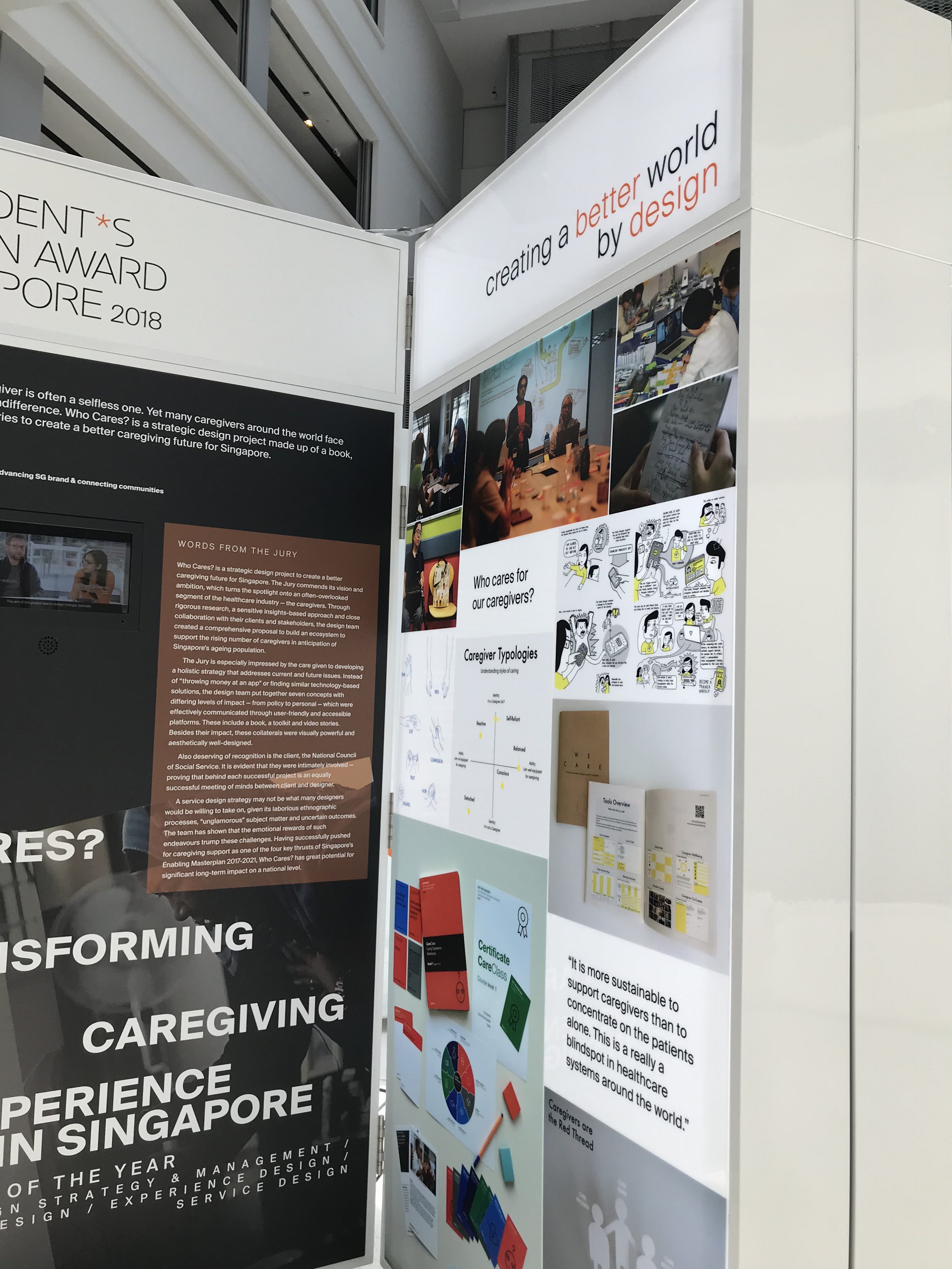
With regards to visual aesthetics, personally, I feel that the design scene in Singapore is going towards more of a minimalist and slicker aesthetic to compliment modern times. In graphic design, blocks of colour and sans serif fonts are typically used with minimal graphics, whereas in architecture and product design, structures are more geometric and clean.
What implications might those goals have on current perception and practice of design?
- Designers now have an additional goal of functionality rather than just creating visually-pleasing and enticing visuals
Personally, after viewing the exhibition, I feel that the design practice in Singapore now has an additional goal of aiding social and economical goals. In addition to creating enticing and visually-pleasing design pieces, designers now have to consider the methods in which the piece can reach out to certain demographics and/or fulfil certain goals. With regards to the goals set in place for Singapore by 2020, practitioners are expected to cater to changing social, economic, and environmental changes. As a result, design is seen to integrate aspects such as “practical functions”, “cultural symbolism”, “limited resources”, “human relations”, “effective communications”, and “timeless beauty”.
"Design can be the key catalyst to fuse the arts, cultural heritage, media, info-communications technologies to bring about new economic opportunities in this intersection, spur innovation, and enable new forms of creative expressions."
"In the emerging creative economy, design will move up the value chain to embody intellectual property and creative capital."
References
https://www.designsingapore.org/modules/mediarelease/designsingapore-announces-blueprint-for-the-singapore-design-cluster

